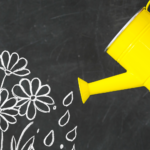In the hustle and bustle of modern life, it’s easy to overlook the importance of physical well-being. However, taking care of our bodies is crucial not only for our personal health but also for the positive impact we can have on our communities. When we prioritize our physical health, we gain more energy and motivation, enabling us to engage more effectively in community involvement and drive positive change. Let’s explore the importance of physical well-being and how it serves as a foundation for broader societal benefits.
The Importance of Physical Well-Being
1. Enhanced Energy Levels
Regular physical activity, a balanced diet, and adequate sleep are key components of maintaining high energy levels. When we feel physically energized, we are more capable of tackling daily tasks and participating in activities that contribute to the well-being of our communities. Exercise, in particular, has been shown to boost endorphin levels, which enhances mood and energy.
2. Improved Mental Health
Physical health and mental health are deeply interconnected. Regular exercise can reduce symptoms of depression and anxiety, improve mood, and increase feelings of overall well-being. A healthy body supports a healthy mind, making it easier to stay positive, resilient, and motivated to engage in community activities.
3. Increased Longevity and Quality of Life
Maintaining physical health through regular exercise, nutritious eating, and preventive healthcare can lead to a longer, more vibrant life. This extended vitality allows us to contribute to our communities for a more extended period, sharing our wisdom, experience, and support with others.
Physical Health and Community Involvement
1. Greater Participation and Contribution
When we feel physically well, we are more likely to participate in community events, volunteer, and engage in social activities. Our increased energy and improved mental state make us more willing and able to contribute to causes that matter to us, from local charities to neighborhood cleanups.
2. Role Modeling Healthy Behaviors
By prioritizing our physical health, we set a positive example for those around us. Friends, family, and community members are more likely to adopt healthy habits when they see others doing the same. This ripple effect can lead to a healthier, more vibrant community overall.
3. Building Stronger Connections
Engaging in physical activities, such as group exercise classes, sports, or community gardening, provides opportunities to connect with others. These connections strengthen social bonds, fostering a sense of belonging and mutual support within the community.
How to Prioritize Physical Well-Being
1. Regular Exercise
Incorporate physical activity into your daily routine. Whether it’s a morning jog, a yoga session, or a dance class, find activities you enjoy and make them a consistent part of your life. Aim for at least 150 minutes of moderate-intensity exercise per week.
2. Balanced Nutrition
Fuel your body with a variety of nutrient-dense foods. Focus on incorporating fruits, vegetables, whole grains, lean proteins, and healthy fats into your diet. Staying hydrated and limiting processed foods and sugary drinks is also essential.
3. Adequate Rest
Prioritize sleep and ensure you’re getting enough rest each night. Aim for 7-9 hours of quality sleep to allow your body to recover and rejuvenate.
4. Preventive Healthcare
Regular check-ups and preventive screenings are vital for maintaining physical health. Stay on top of vaccinations, dental care, and other routine health assessments to catch and address potential issues early.
Taking care of our physical health is more than just a personal endeavor; it’s a foundational step towards creating positive change in our communities. By nurturing our bodies, we equip ourselves with the energy, motivation, and resilience needed to make meaningful contributions to the world around us. Embrace the journey to physical well-being, and watch as it transforms not only your life but also the lives of those in your community.
Let’s commit to nurturing our bodies and, in turn, building stronger, healthier, and more vibrant communities together.







